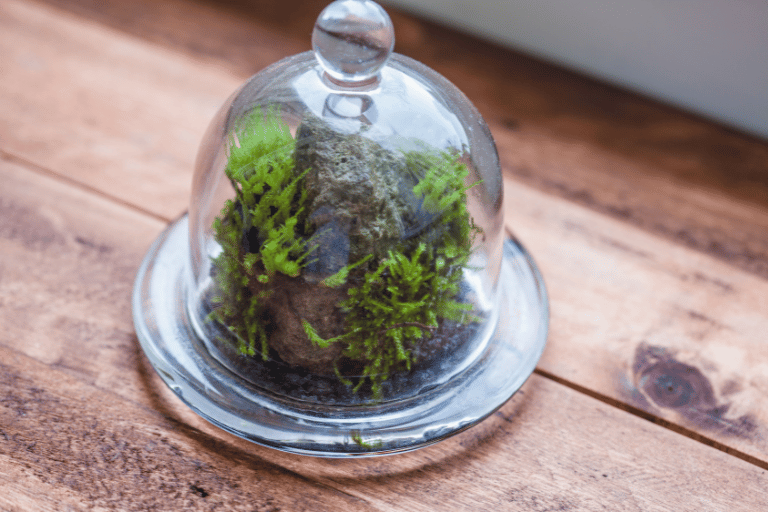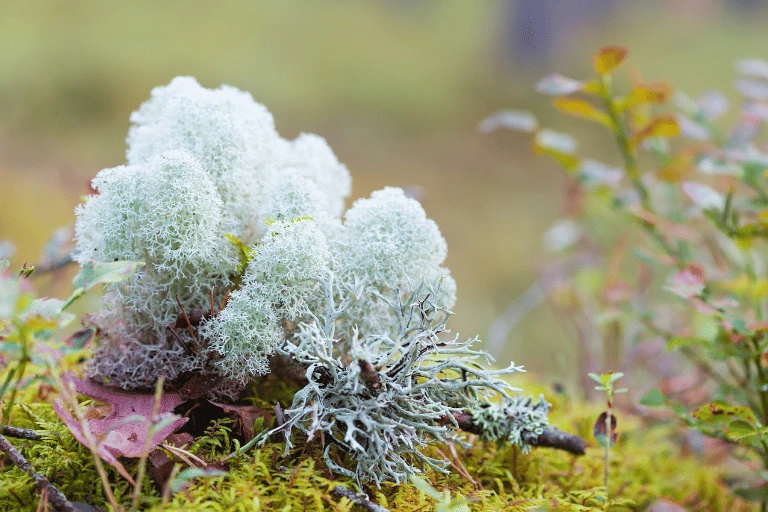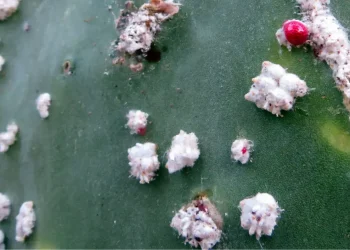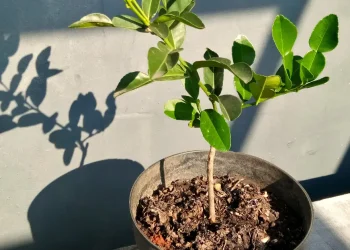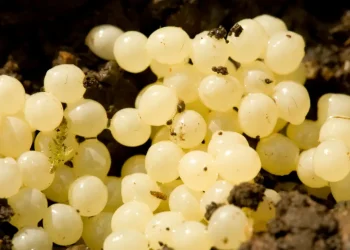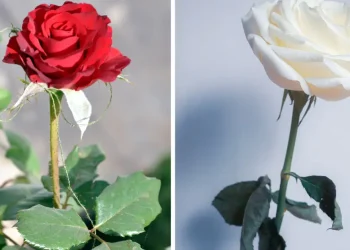Potted plants need enough water and nutrients to thrive, we all know that. But, at least for me, it’s hard to keep track of all my plants and their needs. So I recently got a genius idea.
I added moss to some of my indoor plants to help with water retention and add an extra nutrient boost. I mixed it only into some of my plants to synchronize their watering schedule with my other plants. And it works marvelously.
Since moss can hold a lot of water, it can help slow down the drying out of the soil. But that’s not the only benefit of using moss for potted plants and by far not the only use case.
In this article, we’ll dive into why moss is a marvelous match for potted plants, discuss its benefits but also possible drawbacks, and check which type of moss is the right one for your indoor plant. Dust off your garden gloves, and let’s get mossy with it!
Why Moss is Beneficial for Potted Plants
When used the right type of moss, in the right amount, moss can be an excellent addition to any soil. It comes with a myriad of advantages, from enhanced water retention and nutrient absorption to improved overall plants’ health and aesthetic appeal.
That’s also why moss is a common addition to soil mixes right from the manufacturer. However, unlike other additions, such as perlite, it is used in very small amounts, so you can safely add more. But first, let’s take a closer look at some of the biggest benefits of using moss.
Improves the Look of your Planted Plants
Let’s face the truth, boring old soil isn’t exactly the most visually pleasing.
Moss comes in all different shapes, colors, and lengths that can cover up the soil and bring more colors and a natural look to it.
I especially like the look of these three types:
- Sheet Moss, with its delicate, lush green appearance. It looks like the softest lawn you can ever imagine. However, this type is an especially good sponge, as it can hold water about eight times its weight
- Reindeer Moss, also known as “lichen moss,” comes in many different colors and shades, from snowy white to bright green. It’s visually similar to sheet moss but a bit thicker and with a cushion-like texture.
- Pillow Moss is my third favorite, with a soft and plush appearance that resembles tiny green pillows nestled atop the soil. It will add a nice texture to any soil.
Helps with Water Retention and Moisture Regulation
Probably the biggest benefit that moss brings to potted plants is its incredible ability to assist with water retention and moisture regulation. That’s especially convenient in very light soils, such as sandy or loamy soils, in which the water can run through very fast. Some plants need exactly that, while others may need a bit more time to absorb the water and nutrients.
Moss in the soil acts as a natural sponge that absorbs and holds water and gradually releases it back into the soil as needed. This ensures that the plant receives a consistent and adequate water supply, reducing the risk of both over and underwatering.
Increases Nutrient Absorption and Overall Health
With soaking up water, moss also captures and stores essential nutrients present in the soil or fertilizers that the plant otherwise wouldn’t be able to take by itself. Then it slowly releases it over time, providing a continuous supply to the surrounding plant roots.
Additionally, plants produce oxygen through photosynthesis from the sun and carbon dioxide from the air. If there is an extensive amount of CO2 in the air, it can impact plants’ ability to absorb essential nutrients from the soil. As a result, vital minerals like zinc and iron, which are necessary for healthy growth and development, can become less available to the plant, and it may begin to wilt.
By incorporating moss in your indoor plants, you can help reduce the amount of CO2 in the air and create a favorable environment.
However, when you compare adding another plant to the room and adding moss to the pot, another plant will definitely have a more positive impact on the air composition. But it’s the combination with other benefits that make moss so great.
Prevents Soil Erosion
This benefit of using moss for indoor plants is also related a bit to water retention.
When you are watering potted plants, especially those with lightweight or loose soil, there is a risk of water running off or washing away the soil. This can lead to nutrient depletion, uneven moisture distribution, and root exposure.
By incorporating a layer of moss on top of the soil or even mixing it inside the soil, you can create a natural barrier that helps even out the water distribution and minimize the impact of water runoff.
When can Moss Harm your Plants
While moss clearly offers numerous benefits and can be a great addition to most soil mixes, there are certain situations where it may even harm your plants.
First, if not properly managed, moss can become overly dense and compact, restricting oxygen and water from reaching the roots. Additionally, it’s very easy to overwater your plant if you have a layer of moss on top. You might water the plant just the right amount, but moss can also drain humidity from its environment. This may promote the development of rot in plant roots.
Furthermore, moss has the ability to reproduce relatively quickly under favorable conditions. As such, it can very quickly grow over and fill up a bigger part of the soil than you might want. This can also be a sign of poor drainage or overwatering.
What is the Best Moss to use for Indoor Plants
There are approximately 12,000 species of moss all around the world. They vary in many aspects. Moss can come in different colors, sizes, and shapes or with different-looking leaves (the modified leaves of moss are called perigonium). They can slightly differ in water retention properties, but what moss you choose to incorporate into your potted plants comes mainly to visual.
I have decided to list the seven most common types of moss that you can encounter.
Spikemoss
Its unique name stems from the spike-like appearance of its leaves, which resembles the structure of ferns. This makes a great contrast with plants that have a finer texture.
Spikemoss doesn’t hold that much water, so you don’t have to worry about the drawbacks too much.
Peat Moss
Peat moss is definitely the most used type of moss. But don’t expect beautiful bright colors because this type is usually sold dried up.
Also known as sphagnum peat moss, this type is an organic material derived from partially decomposed sphagnum moss. It is commonly used in gardening and horticulture as a soil amendment and growing medium.
Apart from peat, the bag you can get at any hobby market usually also includes other decayed organic materials from plants and insects. It is a great additive to the soil not only because it can hold water up to 20 times its weight, but it also provides a great nutrient boost.
Spanish Moss
Also known as Tillandsia, Spanish moss is definitely the most beautifully looking moss in my eyes, but it can find its fans.
It’s a type of moss that hangs from tree branches in cascading strands. Contrary to its name, Spanish Moss is not a true moss but rather an air plant belonging to the bromeliad family. And it doesn’t even originate in Spain but rather in the southeastern United States and parts of Central and South America.
Spanish Moss is a popular choice for adding a bit more contrast to indoor plants.
Pin Cushion Moss
This is probably the type that comes up to your mind when you picture moss. Pin Cushion moss really comes up to its name as it resembles a soft, velvety cushion.
You can typically find this type in moist woodland areas, forming dense patches of vibrant green foliage.
It isn’t that good at holding water or helping with nutrition distribution, so it’s rather used as an aesthetic contribution to gardens or terrariums.
Reindeer Moss
Reindeer Moss can be found in arctic and subarctic regions. Its unique appearance consists of densely packed, tufted branches that range in color from gray-green to vibrant shades of orange and red.
It developed to withstand harsh weather conditions and long periods of drought. It can also grow up to ten inches (25 centimeters) tall.
How to Use Moss with Indoor Plants
There are a few ways in which you can benefit from moss. Let’s take a look at every one of them and to which situations it’s suitable.
Mixing Moss with the Potting Soil or Putting it on Top?
When it comes to incorporating moss into your potted plants, you have two primary options. You can either mix it with the potting soil or place it on top. Each method highlights a bit different benefits.
Mixing moss with the potting soil allows for better integration and distribution of its moisture-retaining properties through the entire root system. This can be particularly advantageous for plants that require consistent moisture levels.
On the other hand, placing moss on top of the soil acts as a natural mulch, helping to regulate moisture and temperature while preventing soil erosion. The moss layer will gradually and evenly release water into the soil. And additionally, it adds a nice aesthetic touch to your potted plants.
The amount of moss you should mix into the soil depends mainly on the type of your plants and the size of their pot, as well as the composition of the soil. As a rule of thumb, you can start by mixing only a handful or about 10-20% of moss into the potting soil. It’s a lot easier to add more if you need than to take it out.
Using Moss Poles to Help Bring Nutrients
A moss pole is a stick covered in living moss that can be inserted into the soil of your plants. It’s a creative and effective way to promote plants’ growth by providing additional nutrients as well as supporting them for climbing.
When stuck into the soil, it helps bring nutrients to where it’s most needed – directly to the roots. Moreover, as the plant grows, it can latch onto the moss pole, which provides great structural support and promotes more even growth.
When placing a moss pole into an already established plant, be careful not to damage the roots. When you fill any resistance, tilt the point of the pole a bit or choose another spot.
Moss as the Ultimate Propagation Solution
Moss can also be your ultimate propagation solution when it comes to sprouting new plants or propagating existing ones.
Its unique properties make it an excellent medium for encouraging root development and providing a nurturing environment for cuttings. As moisture encourages rooting, and there is more than enough water and nutrients in moss.
You can take a stem cutting from any plant and wrap it in damp moss. The moss will protect the cutting moist and aid in the development of roots.
To use moss for propagation or seedling, you should first soak a bit of moss in water, ideally distilled, to not burn the now too weak seedling. Then squeeze the moss into a ball. This will help push out any excess water.
Next, push a hole into the moss using your finger or any other tool. You just need to create a bit of space to put the cutting in. Once you put the cutting into the hole, fill the surplus space with more moss. Finally, all that is left is to keep the moss moist and wait for till it starts rooting, then, you can transplant it into the soil.
How to Minimize Fungal Problems when Using Moss
Fungal growth can occur in damp environments, and since moss tends to retain a lot of moisture, it’s an ideal breed ground for all kinds of fungus. But there are ways to minimize fungi that may arise.
First, ensure proper drainage in your pots by using well-draining soil and providing drainage holes. After all, it’s safer not to use moss as an addition to soil mixes if your soil already preserves a lot of the water that comes in.
Also, make sure not to overwater your plants. Excessive moisture can create a favorable environment for fungal development as well as promote root rot.
And additionally, provide adequate airflow around your plants by spacing them appropriately and avoiding overcrowding. Good air circulation helps to reduce humidity levels and discourages fungal pathogens.
Monitor your plants closely, and as soon as you see any signs of infections, such as discolored or wilting foliage, inspect what might be going on and apply fungicides if necessary. If the infection is only small, adjusting watering practices may be adequate.
Frequently Asked Question
Yes, you can mix different types of moss together. When you combine various moss species together, you can create interesting and visually appealing patterns in your potted plants. Just make sure the moss species you choose have similar care requirements and thrive in similar conditions.
You should not use moss for succulents. Succulents are adapted to dry conditions and prefer well-draining soil. When you add moss to that soil, it will retain excessive moisture, which can lead to root rot and other issues. If you are looking for a way to improve the appearance of pots with succulents, you can instead add different rocks or minerals that won’t hurt your plant.
Peat moss is ideal starting medium for plants, but it’s not recommended to use it after your plant grows up a bit. Peat moss is very poor in nutrients, and it’s also sterile. While that means that there are no harmful pathogens, it also doesn’t include any helpful microbes. After your seedling sprouts, make sure to transplant it to a suitable soil mix.
It doesn’t matter whether you add moss to the potting soil or on top of it. In both cases, there is no special care needed. Although moss requires consistent moisture to thrive, your plants may not like that. Make sure to water accordingly to your plant’s needs, and moss will survive with it.
If moss becomes too invasive and starts to overcrowd or overshadow your plants, it’s time to get rid of it. If you placed moss on top of your soil, carefully remove it by hand. Moss has shallow roots, so it shouldn’t disturb your plant. If you also added moss to the potting mix, you may need to replant your plants to new, fresh soil.
Before you go…
By now, it must be evident that moss offers numerous benefits and can be a valuable addition to your indoor (and outdoor) garden. It is very good at retaining moisture but can also improve the appearance of your pots. But there’s also one other thing that can better the health of your plants and is completely natural. I am talking about natural fertilizer in the form of rabbit fertilizer tea. It’s a fertilizer made from rabbit manure. If you own rabbits, make sure not to miss it…
Two Methods to Make Rabbit Fertilizer Tea: All-Natural Fertilizer


